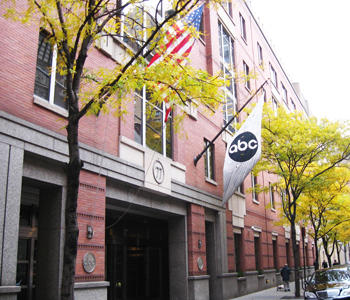As part of a larger strategy to shed non-core assets, Wells Fargo is trying to offload one of the city’s top investment sales and capital markets brokerages, Eastdil Secured. But rather than market it to a brokerage that could bolster its business in either area, the San Francisco-based bank is reportedly turning to risk-taking private equity firms.
It’s a buyer pool that’s proven interested in the past. TPG Capital, for instance, bought Cushman & Wakefield for roughly $2 billion in 2015. To realize the kind of high-yielding payoff a private equity shop would typically want, the firm took Cushman public. The brokerage held its initial public offering last week, and the stock price sat at $18.22 at the close of trading Thursday, up from its initial offering price of $17.
But, according to experts The Real Deal spoke to, it may be too late in the cycle for a similar strategy to play out now.
“Private equity firms are motivated by generating high returns for investors,” said Jade Rahmani, a stock analyst at Keefe, Bruyette & Woods who covers brokerages like CBRE, JLL and Newmark Knight Frank. “How at this point do you find a path to realizing those high returns? You’ve got to hope the cycle extends long enough and there would be time for an IPO.”
For its part, Eastdil, founded in 1967, is a powerhouse in New York. The brokerage is headed by industry veteran Roy March, who is known for doing deals for the likes of Harry Macklowe and Jonathan Gray.
Though March did not respond to a request for comment for this story, he told TRD last year that he views Eastdil as an uncommon breed in the New York market: It specializes in capital markets instead of leasing, and has a salary-and-bonus structure rather than commissions. He pointed to CBRE and JLL, which have typically been run by capital markets folks.
I think whoever buys them would probably be motivated to try to retain as many of their people as possible. Mitch Germain, JMP Securities
“It’s tough to get an entire company to transform into that,” he said at the time. “Our goal is to be a trusted adviser, not simply an intermediary or a bang-bang brokerage.”
With 13 offices worldwide and just over 300 employees, Eastdil is a far smaller operation than its competitors — multinational firms like CBRE, JLL and Cushman, all of which have thousands of employees across the country.
But it still operates within the same stratosphere, competing for the same big-ticket deals. Eastdil ranks as the sixth largest brokerage worldwide in terms of dollar volume of transactions with $104.1 billion worth of deals in 2017, according to National Real Estate investor.
However, Eastdil isn’t the same company it was just a few years ago. March has become a greater presence in the firm’s New York office, following the departure of its top-producing team led by Doug Harmon and Adam Spies in 2016 to Cushman.
“They lost a big asset two years ago in New York, but I think we continue to see a pretty healthy amount of activity out of them, in terms of what the broker rankings are,” said Mitch Germain, an analyst who covers commercial brokerages at JMP Securities.

ABC’s Upper West Side campus at 77 West 66th Street (Credit: Wikipedia)
Here in New York City, the brokerage slid from its position as the top-producing brokerage in 2016 with a record $22.9 billion worth of sales to the city’s No. 3 firm last year with $2.73 billion in deals, according to TRD’s latest ranking.
The company was only behind CBRE and Cushman, which raked in $5.58 billion and $5.21 billion in deals in 2017, respectively. For CBRE’s part, its numbers were bolstered by HNA’s $2.2 billion buy of 245 Park Avenue, the largest sale of the year.
Meanwhile, Eastdil was the second most active debt brokerage in New York last year, with $5.8 billion in financing secured across 15 transactions. That’s more than $1 billion ahead of Newmark, CBRE and Cushman.
And this year, Eastdil is still notching big i-sales deals. It recently brokered the $1 billion sale of the American Broadcasting Company’s Upper West Side headquarters to Larry Silverstein.
But the firm suffered another blow when the team led by Larry Wolfe specializing in hotel sales jumped ship to go to Newmark Knight Frank.
A new owner, however, might take measures to curb the loss of talent.
Unlike other brokerages, Eastdil doesn’t require its dealmakers to sign employment contracts, sources familiar with the firm told TRD, a mainstay of company culture. If and when a suitor emerges, that’s something that would likely change.
“I think whoever buys them would probably be motivated to try to retain as many of their people as possible,” Germain said.
As for Wells Fargo — facing backlash from a fake-accounts scandal and beset by billions in fines — it remains unclear whether the bank will cast a wider net for potential buyers.
If you were going to acquire a brokerage firm today and plan for an IPO several years from now, that seems risky. Jade Rahmani, Keefe, Bruyette & Woods
Chris Kotowski, an analyst at Oppenheimer & Co. who covers the financial giant, said the bank’s decision to sell Eastdil probably has less to do with government scrutiny than it does with the bank wanting to focus on its core business.
“They have sold a number of small businesses in the past two years,” he wrote in an email. He pointed to the sale of its commercial insurance company last year. Meanwhile, in June, Wells Fargo announced it was selling 52 branches in Indiana, Michigan and Ohio.
“I doubt it’s conceived of as a capital raise,” Kotowski said, “but more as a rationalization.”
While it’s uncertain what price Eastdil would fetch, there would only be a handful of brokerages large enough to acquire it. Rivals like CBRE and Cushman are already strong in Eastdil’s capital markets niche, so Rahmani said it’s more likely that a competing brokerage lacking a strong investment-sales platform would be interested in a potential acquisition.
“It makes more sense for one of those kinds of companies to step in,” he said. “JLL’s really only a middle-ranked player in capital markets in the U.S.”
It’s not clear what Wells Fargo’s timeline is for a potential sale. But if the bank continues to target private equity firms, the market would need to provide some runway.
“I think if you were going the private equity acquisition route, you would have to have a multiple-year duration . . . maybe four to five years,” Rahmani said. “If you were going to acquire a brokerage firm today and plan for an IPO several years from now, that seems risky.”
